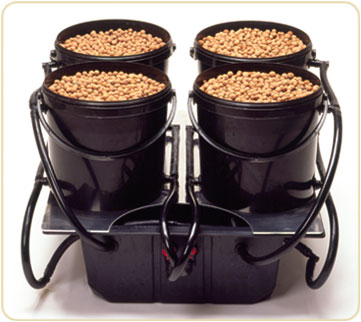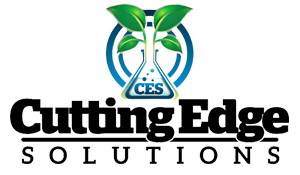 Hydroponic Growing Systems — Which One is Right For You?
Hydroponic Growing Systems — Which One is Right For You?
Hydroponic Growing Systems are becoming the most popular way of growing plants indoors.
Hydroponic growing systems have been used for centuries to produce healthy plants. The word “hydroponic” literally means “working water,” and has its origins in the Latin words “hydro,” which means water, and “ponos,” which means labor. While the word itself sounds sophisticated, it actually is used to describe a number of systems in which water is actively worked, or pumped, into plants and plant roots.
While hydroponic growing systems have become increasingly popular in recent years, many horticulturists may not be aware that there are actually six types of hydroponic growing systems, each with varying degrees of difficulty and complexity. The six types of hydroponic growing systems are Ebb and Flow, Drip, Aeroponic, Deep Water Culture, Nutrient Film Technique (N.F.T.) and Wick. Choosing the most effective system depends on a variety of factors, including environment and equipment availability. In addition, some systems are more effective for specific types of plants, while they won’t work at all on others. Before deciding on which system to implement, it’s imperative to learn about the differences, advantages and disadvantages of each particular hydroponic growing systems.
Of the six hydroponic growing systems, the Wick, Ebb and Flow, Deep Water Culture (also known as Water Culture) and Drip systems are the least complex and simplest for home growers, while the N.F.T. and Aeroponic systems require a certain degree of technical know-how, as well as several pieces of specialized equipment.
Experts agree that the Wick system is the simplest, primarily because there is no moving equipment involved. In the Wick system, the nutrient solution is pulled into the grow tray by means of a wick attached to the reservoir. A wide variety of growing mediums can be used effectively with the Wick system, which makes it an easy choice for home growers. In addition to the basic grow tray and growth media, nutrient solutions, water reservoir and pH soil testing meters, growers using the Wick system also need to purchase the specially-made wick for drawing the nutrients into the soil.
Another popular hydroponic growing systems, the Ebb and Flow, uses a pump that floods the grow tray with the nutrient solution, then drains the nutrient solution into the connected reservoir. The Ebb and Flow system uses a timer which turns the pump on to submerge the surface of the tray; when the timer shuts off, the pump turns off as well, causing the solution to drain out of the tray back into the reservoir. This timer turns itself on several times throughout the day, and then shuts off after the tray is sufficiently flooded and the nutrients have been absorbed into the soil.
One advantage of the Ebb and Flow system is that it is virtually automatic and doesn’t need to be monitored. Another advantage is that it can be used with a variety of different growth medium materials. However, care must be taken in case of the possibility of power outages, and some growth medium materials may also inhibit the pump timer from working properly. In addition to the water reservoir, grow tray and growth medium, nutrient solution and pH soil testing meters, the Ebb and Flow hydroponic growing systems also requires an air pump with a diffuser, as well as a pump for fertilized water.
The Deep Water Culture hydroponic growing systems is another relatively simple system that involves the use of a Styrofoam platform, which floats on top of a tank or aquarium that is filled with the nutrient solution. An outside air pump is used to supply air to an air stone at the bottom of the tank; this causes the solution to bubble, thereby supplying oxygen which is absorbed by the plant roots.
The Deep Water Culture system is primarily used for cultivating fast-growing plants that love water, such as various types of leaf lettuce. However, experts warn that the Deep Water Culture system typically isn’t very effective with most plants other than lettuce, and doesn’t work at all with larger-sized plants or with plants with a long growth life. In addition to the grow tray and growth medium, nutrient solution, water reservoir and pH soil testing meters, the Deep Water Culture hydroponic growing systems also requires an air pump and diffuser, as well as a Styrofoam platform, which can be constructed at home, and an air stone for the bottom of the tank or aquarium.
The Drip hydroponic growing systems is especially popular because it can be adapted to a large number of growing medium soils, and is effective with a wide variety of plants. The Drip system is operated by a timer, which controls a pump submerged underneath the growing tray or tank. The pump is turned on by the timer, and a drip line is activated, which drips the nutrient solution into the base and roots of the plants.
There are two basic Drip hydroponic growing systems, the Recovery Drip system and the Non-Recovery Drip system. With the Recovery Drip system, all of the excess nutrient solution is drawn back into the reservoir, where it can be reused. This is a more cost-effective system, as it not only reuses the unused nutrient solution, but also mitigates the necessity for an expensive timing system. With the Non-Recovery Drip system, the excess solution is not drained off for reuse, so the watering needs to be more precisely timed and monitored so that solution isn’t wasted. Experts, however, warn that the Recovery Drip system does require periodic monitoring of the nutrient solution in the reservoir, because the recycled solution will have a weaker pH and therefore need occasional adjusting.
In addition to the water reservoir, nutrient solution, grow tray and growth medium material and pH soil testers, the Drip hydroponic growing system requires a drip manifold and drip line, as well as a pump for fertilized water.
These four hydroponic growing systems are the most adaptable to home use, requiring the least amount of equipment, expertise and expenditure. However, it’s best to be sure of your home garden’s requirements before choosing the most effective system for your horticultural needs.























 © 2017
© 2017
clark, January 11, 2012 6:25 pm - Hydroponic Growing Systems
I like the ebb and flow method. I Prefer the to use a soil medium in pots that sit in the tray which is flooded with my nutrient solution and drained periodically. It basically takes care of itself.